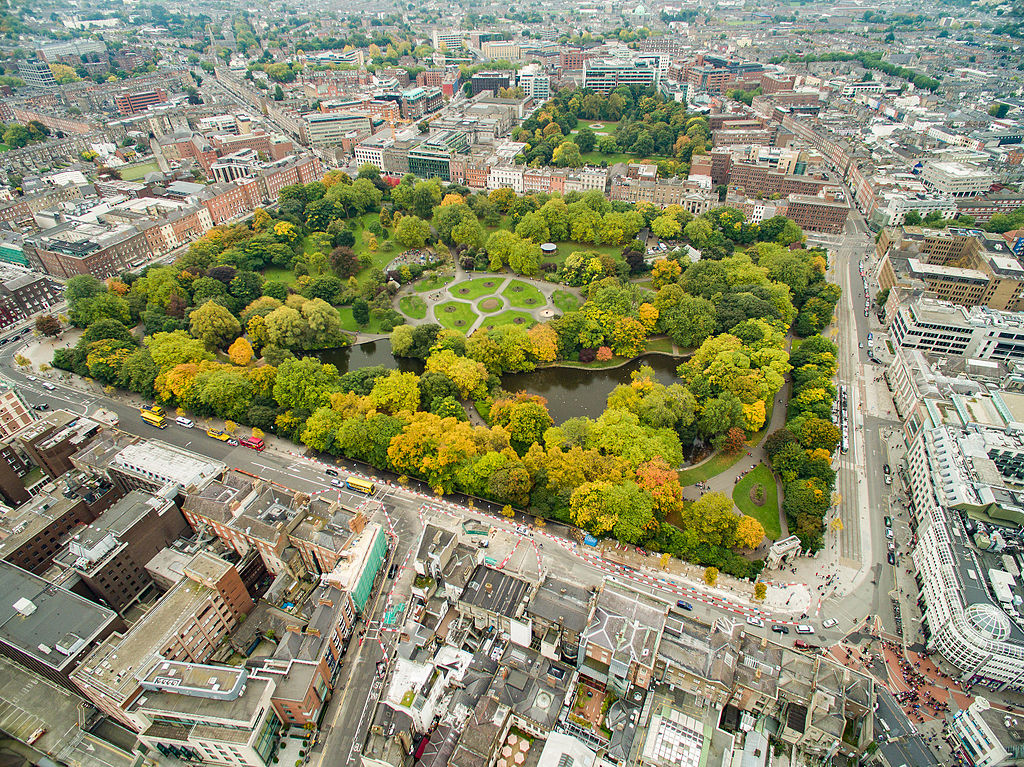Dublin, the vibrant capital of Ireland, is well known for its rich history, lively culture, and architectural beauty – but beyond its cobbled streets and Georgian buildings lies a quieter, greener side waiting to be discovered. Dotted throughout the city are lush parks and expansive green spaces that offer a refreshing retreat from the urban bustle. Whether you’re looking for a peaceful weekend stroll or a visitor eager to experience a different side of Dublin, the city’s parks provide the perfect setting for relaxation, recreation, and a closer connection to nature. You can always visit these amazing spots after free walking tours in Dublin.
Phoenix Park: One of Europe’s Largest Walled Parks
At over 1,700 acres, Phoenix Park is the largest enclosed public park in Dublin and one of the largest walled city parks in Europe. Located just a few kilometers from the city center, it’s a vast green lung for the Irish capital and a beloved destination for locals and tourists seeking space to unwind, explore, or breathe fresh air.
Originally established as a royal deer hunting ground in the 17th century, Phoenix Park opened to the public in 1747. Today, it combines natural beauty with cultural heritage, offering various attractions that appeal to all interests and age groups.
A Home to Wildlife
One of the park’s most iconic features is its herd of wild fallow deer, which have roamed freely since the 1600s. Spotting them grazing among the trees or crossing one of the park’s wide meadows is a magical experience, especially for visitors unfamiliar with wildlife in such an urban setting. In addition to the deer, the park is a haven for birds and small mammals, with designated conservation areas supporting biodiversity.
Recreation and Relaxation
The park’s scale allows for a wide variety of recreational activities. Cyclists, joggers, and walkers enjoy the extensive network of trails that crisscross meadows, woodlands, and tree-lined avenues. Families often gather around People’s Flower Gardens, a 22-acre ornamental garden near the Parkgate Street entrance, with vibrant flower beds, fountains, and picnic spots.
For more active visitors, playing fields, cricket pitches, and bike rentals offer ways to enjoy the outdoors. Open-air concerts and sporting events bring additional energy to the park during warmer months.
The River Liffey: The Heartbeat of Dublin
The River Liffey flows gracefully through the center of Dublin, carving a natural divide between the city’s north and south sides. More than just a geographical landmark, the Liffey symbolizes Dublin’s identity, shaping its history, economy, and urban landscape for centuries. Its gentle waters and iconic bridges offer scenic views and a unique way to experience the city’s rhythm.
A River Steeped in History
The name “Liffey” is believed to derive from the Irish word An Life, and its connection to Dublin dates back to the city’s very origins. The river provided fresh water, a transport route, and a protective barrier for the early settlers of Dubh Linn, the dark pool that gave Dublin its name.
As the city grew, the Liffey became a hub of commerce and trade. In the 18th and 19th centuries, it was lined with bustling docks, warehouses, and merchants’ houses. Though the role of the river in trade has diminished, its historical significance remains deeply woven into the city’s fabric.
Iconic Bridges and Cityscapes
One of the Liffey’s most striking features is the series of bridges that span its width, each with its own story and style. From the Ha’penny Bridge, a beloved cast-iron footbridge built in 1816, to the sleek, harp-shaped Samuel Beckett Bridge designed by Santiago Calatrava, these crossings connect more than just physical space – they link Dublin’s old and new faces.
Other notable bridges include the O’Connell Bridge, which is remarkable for being as wide as it is long, and the Rosie Hackett Bridge, which was dedicated to a trade unionist and one of the few bridges in Ireland named after a woman.
A Place for Leisure and Reflection
In recent years, the Liffey has transformed into a space for leisure as much as transport. The Liffey Boardwalk runs along parts of the riverbanks, allowing pedestrians to stroll above the water and view the city skyline. River cruises and kayaking tours now offer visitors a different vantage point of Dublin – one where Georgian architecture, modern glass facades, and historical landmarks blend seamlessly along the water’s edge.
When the city lights reflect off the rippling surface at dusk, the Liffey becomes especially captivating, drawing photographers, couples, and contemplative wanderers to its banks.
The Bottom Line
Dublin may be a bustling capital, but its parks and green spaces tell a different story: calm, community, and natural connection. Whether you’re admiring deer in Phoenix Park, getting lost in the maze at Iveagh Gardens, or enjoying a riverside walk, a park in Dublin can make you forget you’re in a city.
For locals, these spaces offer a chance to recharge. For visitors, they provide insight into the soul of Dublin – a city that balances history and greenery, culture and calm. So next time you’re in town, take a break from the pubs and museums, and step into one of Dublin’s verdant sanctuaries.


